The fundamental principles of counting are foundational to students’ mathematical development. Over the years I’ve worked with teachers to implement counting collections in their classrooms. I have found it to be a more equitable practice than traditional curricula and workbooks. There is an access point for all students, especially your English language learners. Let’s get into what the foundational counting principles are and how you can use counting collections to teach them to your students in an equitable way. Counting Collections is a MUST for TK-2nd grade teachers and for 3rd-5th grade teachers who need an intervention tool for their students.
What is a Counting Principle?
A counting principle is a framework to guide teachers in paying attention to the processes that students go through when they are learning to count. Awareness and understanding of these principles can help you acknowledge students’ strengths and areas of growth when learning to count. There are 3 fundamental counting principles: sequencing, 1:1 correspondence, and cardinality.
Fundamental Counting Principle Example 1: Sequence
Students must understand that there is an ordered sequence when counting numbers. We have number names that follow a specific order. There are no repeats, however, we follow a base-ten model. This means that after a student counts 10 objects, we begin grouping by 10s, then hundreds, then thousands, and so on… Students only need to memorize a small quantity of number names and then understand and apply general rules for naming larger numbers. An example of sequencing might sound like: 1, 2, 3, 4, 5, 6, 7, 8, 9, 10, 11, 12, 15, 16, 17, 18, 19, 30. Students are missing some number names and have a general idea of the base 10 rules.
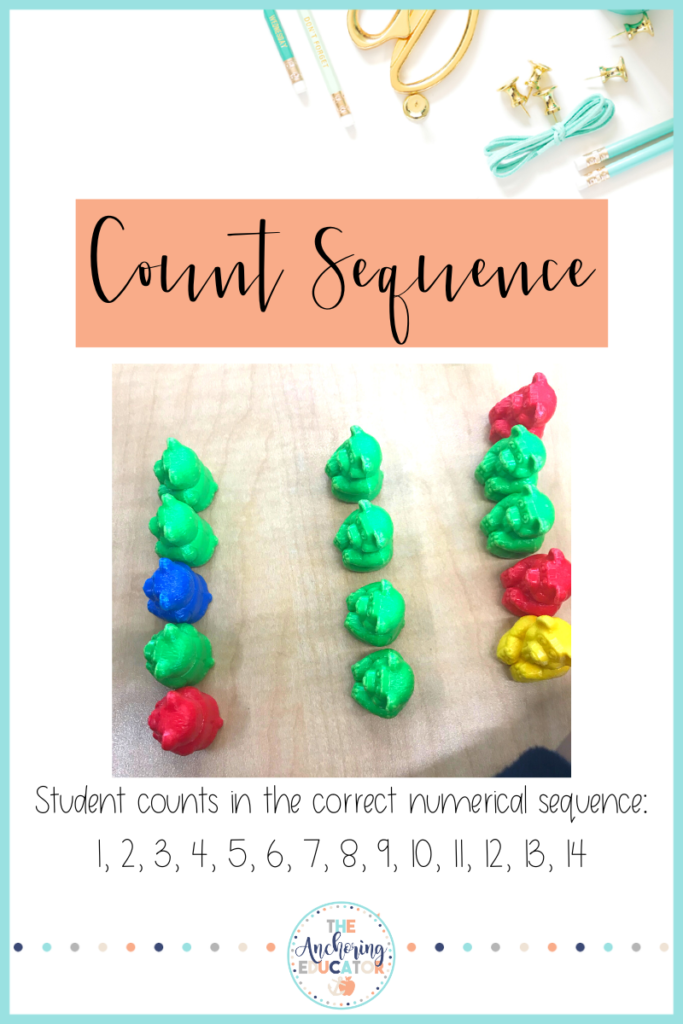
Fundamental Counting Principle Example 2: 1:1 Correspondence
Students must understand that there is a correspondence between numbers in the counting sequence and each object is counted only once. Students must be able to somehow keep track of this in order to get an accurate count. An example of 1:1 correspondence might look like a student pointing to each object as they count or moving objects over as they count.
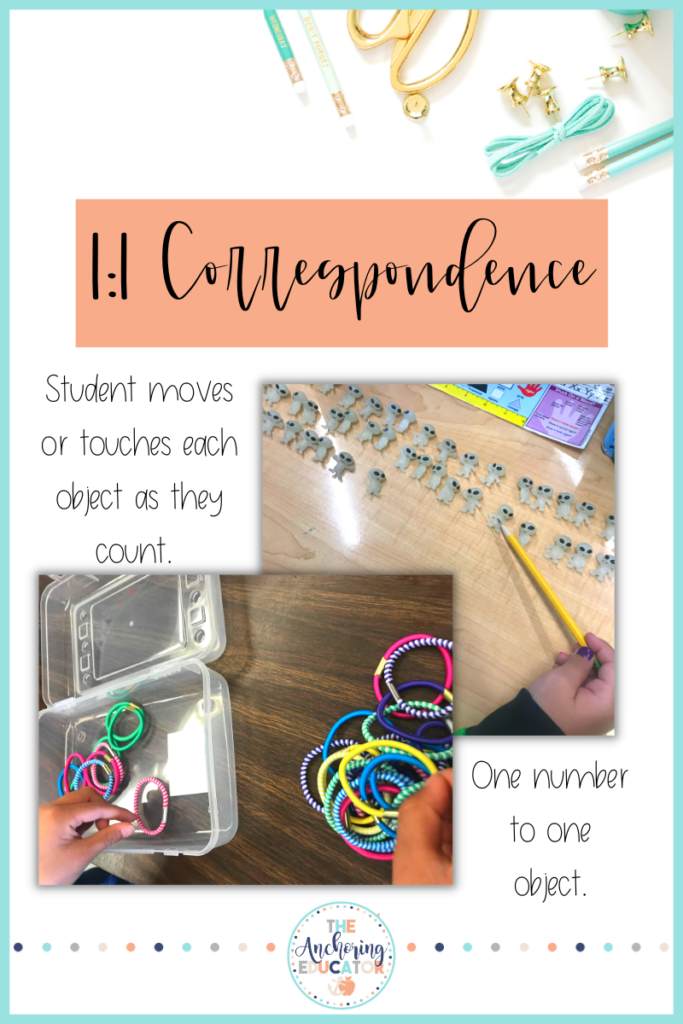
Fundamental Counting Principle Example 3: Cardinality
Students must understand that the last number counted represents the total number of objects counted. Students may have cardinality to a certain number, but not all numbers as they are learning. An example of cardinality might sound like a student counting to 5, then, when the teacher asks ‘How many are there?’ the student repeats 5. This student has cardinality to 5. It is possible for this same student to count to 12 and when the teacher asks ‘How many are there?’ the student begins recounting. This student does not yet have cardinality to 12.
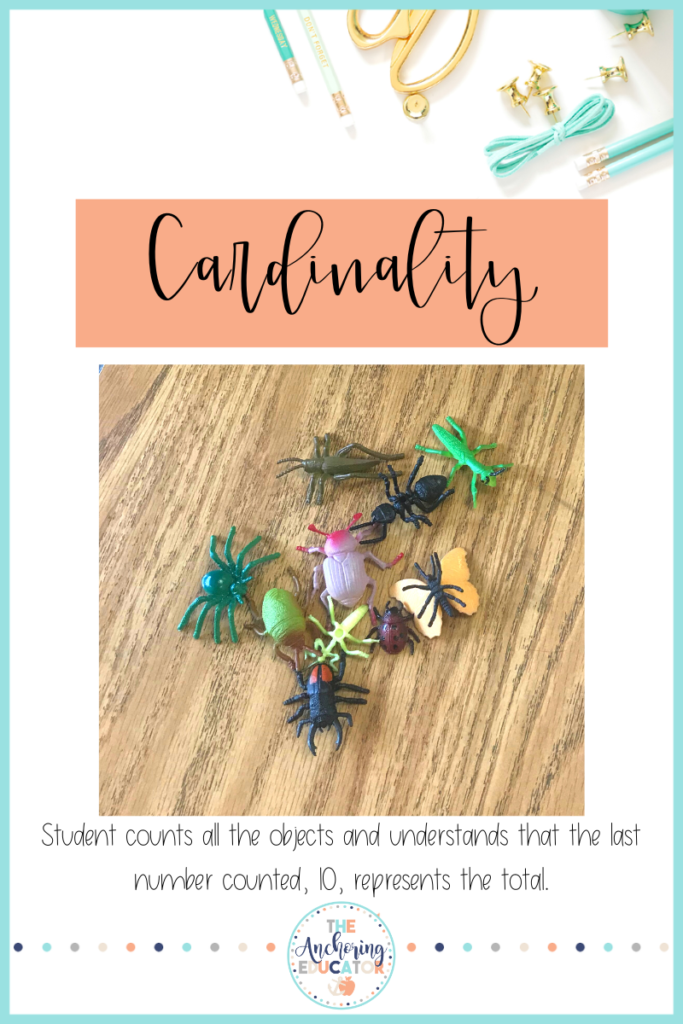
So How Do I Teach These Fundamental Principles of Counting?
Counting Collections is an extremely valuable way to teach these fundamental counting principles. Counting Collections is a student-centered activity. Students become aware of their mathematical thought processes and gain a strong sense of numerical relationships. It’s perfect for building number sense in Preschool-2nd grade. Counting Collections can also be used as an intervention tool for 3rd-5th graders. I began the journey of implementing Counting Collections a handful of years ago. It pushed my questioning techniques to better meet the diverse needs of my students and students go CRAZY for it! There are so many benefits to bringing this tool into your classroom. I have created a Counting Collections Survival Kit with everything that you need for successful implementation. You can read more about Counting Collections on my blog here.
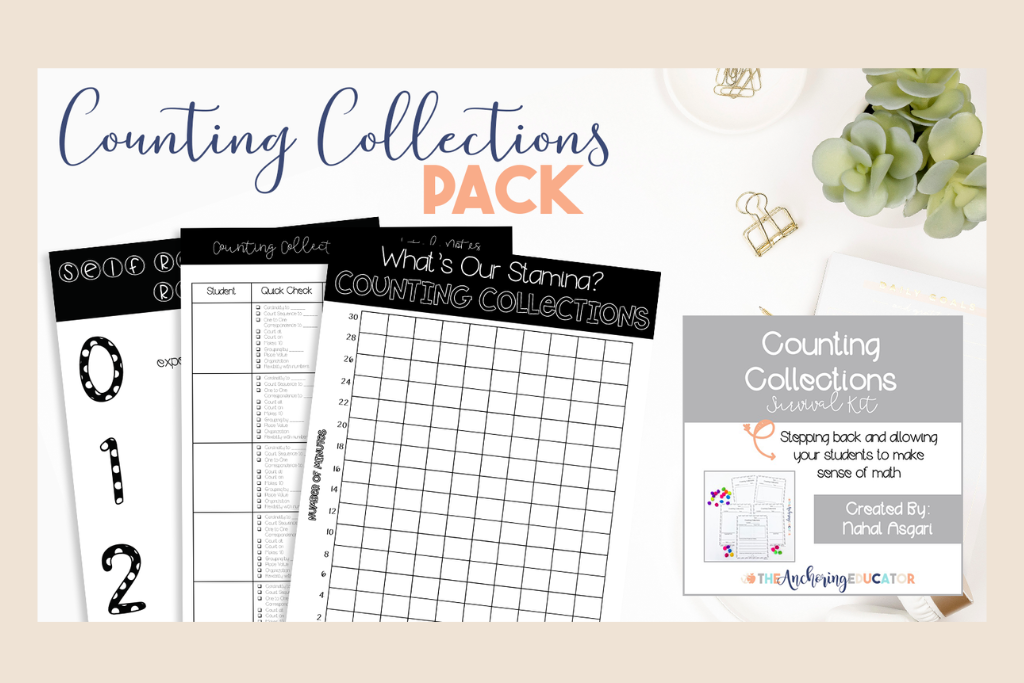
What Makes Counting a Collection Equitable?
Equitable classroom practices are essential for helping all students reach their full potential. Here are 10 equitable practices that are supported when students are counting a collection.
- Teachers are in close proximity to students and provide individual, differentiated support.
- Asset-based activity that identifies students’ current knowledge and builds on student understanding from there
- Uses wait time
- Uses visual aids/manipulatives to support student learning
- Students can count in their home primary language if necessary
- Asks higher-order questions of ALL students
- Uses probing techniques to assist student answers
- Honors multiple strategies
- Recording sheets are modeled by the teacher and peers during strategy share outs
- Teacher provides specific oral feedback
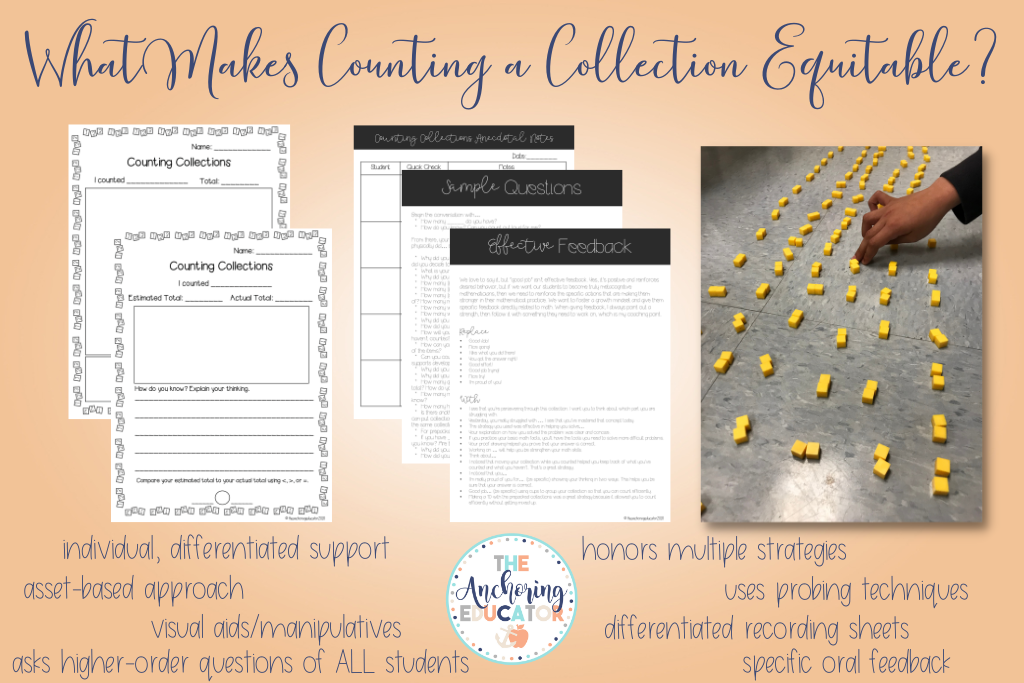
Resources
Counting Collections-Blog Post
Everything you need to implement Counting Collections-Resource
I really hope that this information on the fundamental principles of counting is helpful. In addition, I know that Counting Collections can support you in supporting your students equitably. If you have any questions or want more information on anything, please leave a comment below! I am extremely passionate about counting collections! I love connecting with you as much as possible and providing you with continued support!
